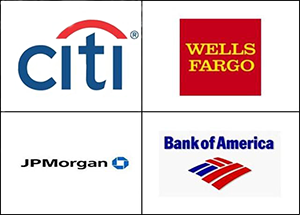By Pam Martens: January 8, 2013
 Monday was settlement day on Wall Street. The four largest Wall Street banks and a handful of smaller ones tossed $20 billion at their various regulators and slid home free without going to jail over egregious foreclosure abuses that have ravaged the nation and left millions of families in desperate straits.
Monday was settlement day on Wall Street. The four largest Wall Street banks and a handful of smaller ones tossed $20 billion at their various regulators and slid home free without going to jail over egregious foreclosure abuses that have ravaged the nation and left millions of families in desperate straits.
News of big settlements with Wall Street are typically dumped on Friday to ensure the news is old hat by Monday morning. But these two big settlements, totaling over $20 billion, came at the beginning of the news week, adding the curiosity element as to why Wall Street actually wanted to create buzz around the settlements. It didn’t take long to figure that out: the buzz was to help prop up bank shares on the premise that the worst of the past misdeeds are now behind the banks. The regulators eagerly boarded this public relations train by releasing the barest of details on the settlements.
In the first settlement, ten U.S. banks including the four largest U.S. banks — JPMorgan Chase, Citigroup, Bank of America and Wells Fargo – agreed to pay $8.5 billion to shut down a review of individual foreclosure case files in a process established by the Office of the Comptroller of the Currency (OCC) and the Federal Reserve in 2011. As we reported last week, that program was hopelessly compromised from the start by its structure. So-called “independent” reviewers were paid directly by the banks and had to rely on the banks for much of their information, rather than being able to speak directly to the abused foreclosure victims.
The OCC said in a statement that the $8.5 billion “includes $3.3 billion in direct payments to eligible borrowers and $5.2 billion in other assistance, such as loan modifications and forgiveness of deficiency judgments.”
Neither the OCC nor the Federal Reserve released any of the following details: how much did each bank pay individually (as a means for the public to determine where the worst infractions were committed); what were the specific findings of the so-called independent foreclosure reviews (so that the public can be on the lookout for the same attempted abuses in the future); what safeguards have been put in place to prevent these abuses from reoccurring. In a call to the OCC I learned that it planned to release some of the above details, but not for weeks.
The OCC also said in its statement that 3.8 million impacted borrowers “are expected to receive compensation ranging from hundreds of dollars up to $125,000, depending on the type of possible servicer error.” Error? The OCC and Federal Reserve established the program as an enforcement action due to findings of fraud and abuse in the foreclosure process, including tens of thousands of forged signatures (robo-signers) on foreclosure documents brazenly submitted to courts of law. Now the bank regulator is calling this abuse an “error”?
Thomas Curry, Comptroller of the Currency, released his own statement which read in part:
“When we began the Independent Foreclosure Review, the OCC pledged to fix what was broken, identify who was harmed, and compensate them for that injury. While today’s announcement represents a significant change in direction, it meets those original objectives by ensuring that consumers are the ones who will benefit, and that they will benefit more quickly and in a more direct manner.” It should be noted that there was no notification of who was harmed or how they were harmed; no details on how the system has been fixed; and no details on the specific sums that would be dispursed or the criteria for dispursing it.
The other six banks to sign onto the deal were Aurora, MetLife Bank, PNC, Sovereign, SunTrust, and U.S. Bank. Alys Cohen, an attorney with the National Consumer Law Center, said in a statement: “The Independent Foreclosure Reviews were deeply flawed, and any movement towards more compensation for homeowners is a step in the right direction. However, the capped pool of cash payments is wholly inadequate in light of the scale of the harm. If the reviews had been done right the first time, banks would have been on the hook to pay far more to homeowners, even though the planned scheme for recompense fell far short of full compensation.”
In a separate settlement with the Federal Housing Finance Agency, the regulator and conservator of Fannie Mae, Bank of America agreed to pay $11.6 billion to settle charges it sold improper mortgages to Fannie Mae between 2000 and 2008. As part of the settlement, Bank of America agreed to buy back 30,000 of those mortgages.
Any public relations push by the banks to rouse public perception that they are leaving behind their mortgage woes and related staggering legal costs will face the treacherous headwinds of the estimated $300 billion in lawsuits over the selling of dodgy mortgage backed securities. The Federal Housing Finance Agency represents $200 billion of those lawsuits, bringing charges against 17 banks in 2011 that the government sponsored enterprises it oversees, Fannie Mae and Freddie Mac, were duped into buying unsound mortgage securities. Repeated efforts by the big banks to have the case dismissed have been ruled against by Federal District Court Judge Denise Cote in the Southern District of New York. Cote has scheduled jury trials beginning in mid 2014.

